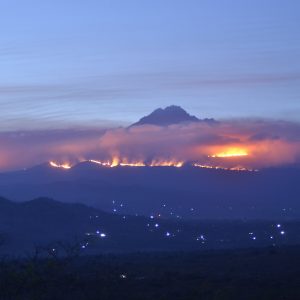Overview of Ngorongoro Crater’s Geographic Location
Ngorongoro Crater, located in the Ngorongoro Conservation Area in Tanzania, is a breathtaking natural wonder that draws visitors from all over the world. The crater is the world’s largest inactive, intact, and unfilled volcanic caldera, formed over two to three million years ago when a large volcano exploded and collapsed on itself. The crater’s floor covers an area of approximately 260 square kilometers and is home to a diverse range of flora and fauna, making it a hotspot for wildlife enthusiasts and nature lovers.
The Ngorongoro Conservation Area is situated in the northern part of Tanzania, near the city of Arusha. The crater itself lies within the eastern arm of the Great Rift Valley, a massive geological fault line that runs through East Africa. The region’s unique geology and topography contribute to the abundance of wildlife found within the crater, as well as the stunning landscapes that surround it.
Detailed Analysis of Ngorongoro Crater’s Surrounding Area
The Ngorongoro Conservation Area is not only home to the iconic crater but also boasts a variety of other attractions and natural wonders that make it a must-visit destination for any traveler. The area is a designated UNESCO World Heritage Site and is renowned for its high concentration of wildlife, including the famous Big Five – lions, elephants, leopards, buffaloes, and rhinoceros.
One of the most striking features of the Ngorongoro Conservation Area is its diverse ecosystems, which range from lush forests and grasslands to arid savannahs and swamps. These different habitats support a wide array of plant and animal species, creating a rich tapestry of biodiversity that is unparalleled in the region.
Visitors to the area can embark on guided tours of the crater with experienced safari guides from Sunset Africa Safari, a reputable tour operator that specializes in African wildlife safaris. The tours offer a unique opportunity to explore the crater’s wildlife-rich plains and witness the incredible diversity of species that call it home.
In addition to its wildlife, the Ngorongoro Conservation Area also boasts a rich cultural heritage, with several Maasai villages located within its boundaries. The Maasai people are a semi-nomadic tribe known for their distinctive customs and traditional way of life, and visitors can learn about their traditions and beliefs by visiting their villages and interacting with the local communities.
Overall, the Ngorongoro Conservation Area is a true gem of East Africa, offering visitors a once-in-a-lifetime opportunity to witness the wonders of nature up close. Whether you’re a wildlife enthusiast, a nature lover, or a cultural explorer, a visit to the Ngorongoro Crater is sure to leave you in awe of the beauty and diversity of the natural world.
For booking inquiries and more information about guided tours of the Ngorongoro Crater with Sunset Africa Safari, please contact info@sunsetafricasafari.com.


